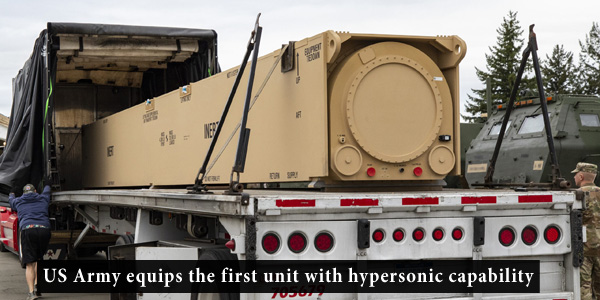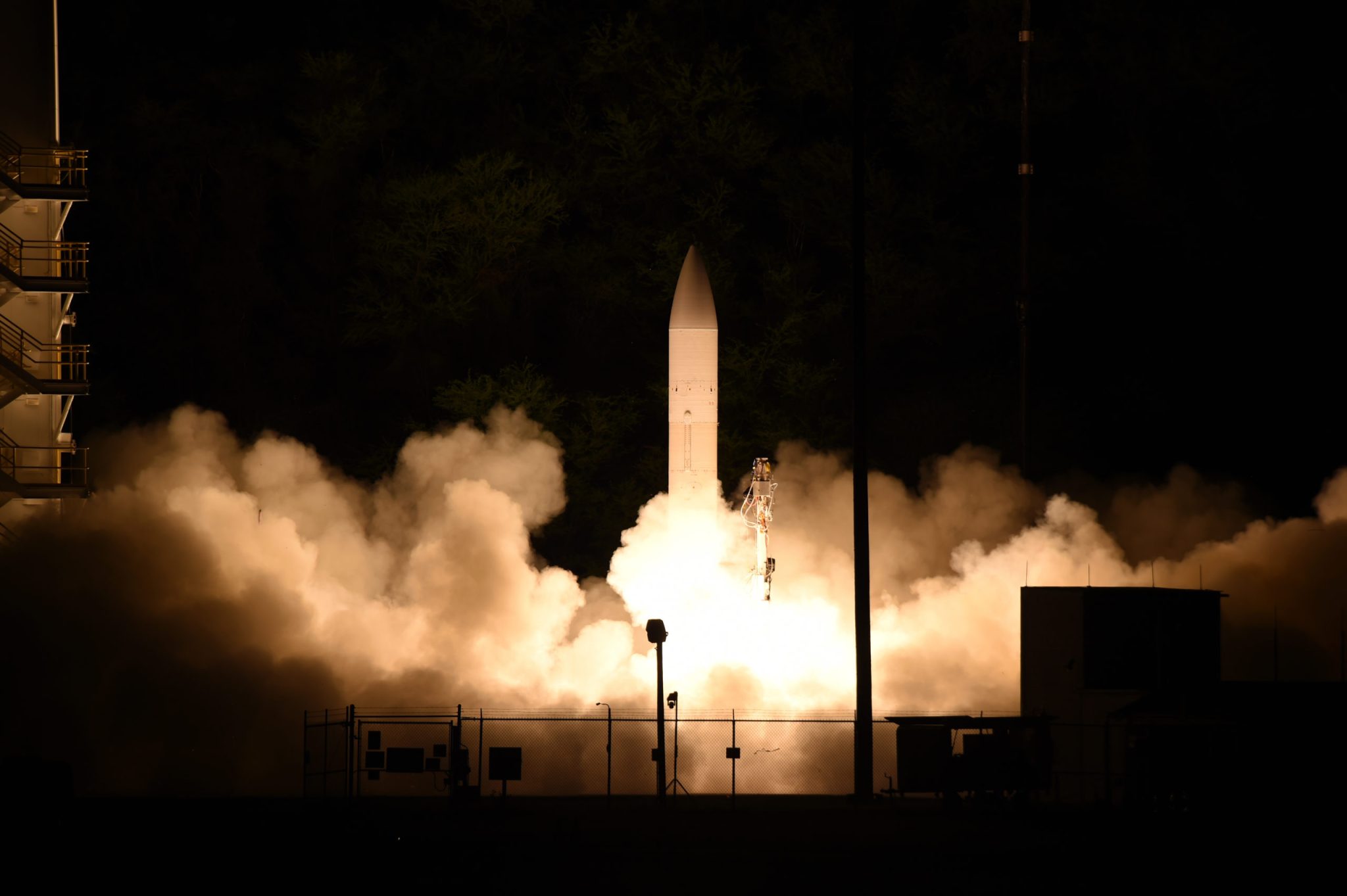U.S. Army equips the first unit with hypersonic weapon capability
IRIA Staff - October 10, 2021
Updated on November 20, 2021

The U.S. Army has successfully completed the delivery process of its first hypersonic weapon capability unit, according to the reports provided by the service officials from Rapid Capabilities and Critical Technologies Office at the Joint Base Lewis-McChord in Washington State.
The first batch of battery equipment, consisting of two Training Canisters, was received by I Crops, 5th Battalion, 3rd Field Artillery Regiment, and 17th Field Artillery Brigade. The delivery of the hypersonic hardware prototype was completed on October 7, 2021, with a ceremony at Joint Base Lewis-McChord. The process was completed two days before the deadline, as the last consignment containing battery equipment was unloaded at the base.
Lt. Gen. L. Neil Thurgood, the RCCTO’s director, said in a statement, “From a blank piece of paper in March 2019, we have come a long way with our industry partners and joint services, to deliver this hardware in just over two years. Now, soldiers can begin training”.
The first test of the Common-Hypersonic Glide Body, or C-HGB, took place in March 2020 when a missile launched from the Pacific Missile Range Facility in Kauai, Hawaii, the missile has the capability to hit its target with an accuracy of 6 inches diameter.
Hypersonic weapon holds the capability of traveling faster than the speed of sound and can maneuver between the flight varying the altitudes and trajectory, making it extremely difficult to detect and intercept. The C-HGB is made up of the weapon’s warhead, guidance system and thermal protection shield that houses the cables as well.
Rob Strider, who is in charge of the hypersonic project introduced the system as “Dark Eagle”. The Long-Range Hypersonic Weapon (LRHW) system includes a battery operations center, four transporter-erector-launchers, and modified trucks and trailers that make up the for the ground equipment.
Military engineering sector worked closely with industrial base for the development of the Long-Range Hypersonic Weapon because the domestic sector has never built such technology before. American aerospace, arms and defense corporation, Lockheed Martin developed the integrations system for the capability of launching from a mobile truck. While Dynetics provided assistance to build the hypersonic gliding body for the missile that also has the capability launched from different platforms. The industrial services also produced launchers, trucks, trailers and the battle operation center necessary to put together the weapon battery.
A major emphasis of the weapon development project focused on how the system can be made easier for the soldiers to execute. Hence, “Soldier-Centered Design” technique was utilized in order to have soldiers’ feedback while testing the designs through augmented reality tools.
“In delivering a prototype, we understand we are not delivering the perfect solution,” Strider said in the media briefing, “and we tailor our acquisition risk acceptance practices accordingly. Our goal is to deliver a prototype that soldiers can use and the mission requires that is deemed safe and that the Army can leverage as a potential baseline for a program of record. Soldier-centered design has been a key part of this effort in reducing risk to ensure an operationally effective weapon system.”
Strider also mentioned that 5th Battalion, 3rd Field Artillery (5-3 FA) Regiment shall be able to completely install the system by FY2023, however he did not specify the exact time when the system shall be up and running due to security concerns.
According to Gillian Bussey, Director of Department of Defense’s Joint Hypersonics Transition Office, Hypersonic Air-breathing Weapons Concept and ARRW are both still in testing and technology development, that is Phase 1 of a four-phase process. Despite the fast-paced progress of transitioning to prototyping phase, that is Phase 2, the U.S. is yet to achieve Phases 3 and 4, that is fielding and program of record phase.
The Department of Defense’s requested a $3.8 billion budget for hypersonics research in the 2022 fiscal year, that increased by $600 million compared to last year’s request of $3.2 billion.
After the completion of development and installation process, the unit is available for training with first training exercise that is expected to commence by the Naval Forces in the first quarter of FY2022. The unit will also be available for subsequent tests and trainings in the fourth quarter of FY2022 and the second quarter of FY2023. The 5-3 FA is expected to partake in the test and training on the Dark Eagle in the third quarter for FY2023 due to some technical reasons.
 The U.S. Navy and U.S. Army jointly executed the launch of the C-HGB hypersonic glide body from Pacific Missile Range Facility Hawaii on March 19, 2020. (Image Credit: U.S. Navy)
The U.S. Navy and U.S. Army jointly executed the launch of the C-HGB hypersonic glide body from Pacific Missile Range Facility Hawaii on March 19, 2020. (Image Credit: U.S. Navy)Regions
Issues

























